As the festive season approaches, our homes and streets transform into a mesmerizing spectacle of sparkling lights and vibrant colors. Christmas is a time for joy and celebration, and nothing embodies the spirit of the season quite like the rich hues that adorn everything from Christmas trees to cozy fireplaces. But have you ever paused to consider the significance behind these Christmas colors?
From the classic red and green to the shimmering gold and icy blue, each Christmas color carries a unique history and deeper meaning that adds to the magic of the season. These color symbolize ancient traditions, religious beliefs, and the enduring spirit of hope and renewal. In this article, we’ll embark on a journey to uncover the fascinating stories behind these festive hues and discover how they intertwine to create the enchanting tapestry of Christmas decorations.
The Classic Christmas Color Duo: Red and Green
Ancient Roots
Long before shopping malls and decorated town squares, the story of Christmas colors began with nature itself. Ancient Celtic people (The Druids) discovered something remarkable in the depths of winter – while other plants withered, holly plants maintained their vibrant red berries and green leaves. This natural wonder became a symbol of endurance and hope during the coldest months, leading these colors to become associated with winter celebrations.
Religious Symbolism
In Christian traditions, red symbolizes the blood of Jesus Christ, while green represents eternal life and the evergreen plants that survive through winter. This powerful symbolism helped cement these colors in Christmas traditions, particularly in medieval church decorations and religious artwork.

The Coca-Cola Connection
While red and green were already symbolized for Christmas, their popularity soared in the 1930s thanks to Coca-Cola’s iconic Santa Claus advertisements. Artist Haddon Sundblom created the jolly, red-suited Santa we know today, forever linking these colors with modern Christmas decorations.

Unwrapping the Traditional Christmas Colors
When we think of Christmas, a certain palette of colors instantly springs to mind. These traditional hues have deep-rooted symbolism and have been associated with the holiday for centuries.
1. Radiant Red
This vibrant hue is arguably the most recognizable color in the Christmas palette. From Rudolph’s shiny nose and Santa’s cheerful suit to the bright berries of holly, red is synonymous with the festive spirit. In Christian tradition, red symbolizes the blood of Jesus Christ, signifying his sacrifice and the love he represents. This symbolism has deep roots in religious artwork and medieval church decorations, where red was used to depict the blood of Christ and the martyrs.
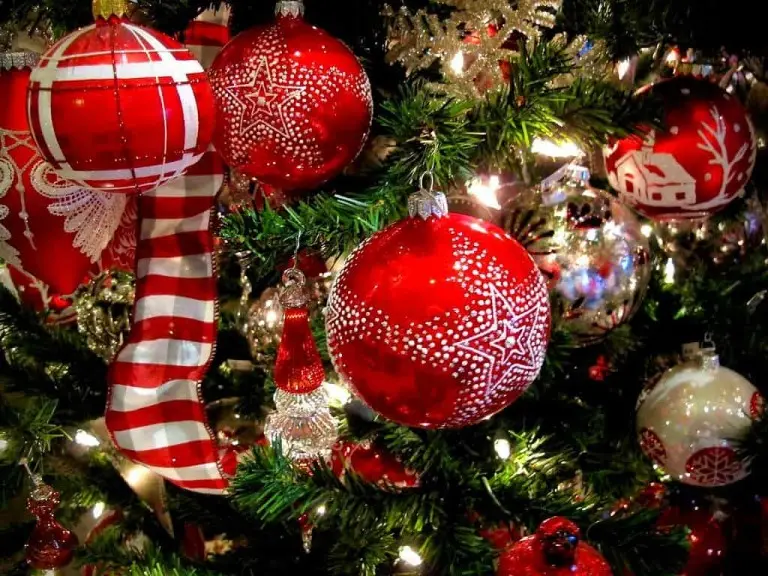
Red’s association with Christmas extends beyond Christmas symbolism. In ancient Rome, holly branches with their vibrant red berries were given as gifts during Saturnalia, a winter festival. This tradition eventually intertwined with Christmas celebrations, further solidifying red’s place in the holiday palette. Whether it’s the warmth of a crackling fire, the joy of giving, or the deep symbolism of faith, red evokes a range of emotions that lie at the heart of Christmas.
2. Evergreen Green
The lush green of evergreen trees, like fir, spruce, and pine, has been a symbol of life and nature’s resilience since ancient times, especially during the winter when most other plants lose their leaves. This enduring color represent the continuity of life and the promise of spring’s return, even in the darkest depths of winter. Long before Christianity, people incorporated greenery into their homes during winter solstice celebrations as a reminder of life’s perseverance and a hopeful anticipation of warmer days to come.

This tradition seamlessly blended with Christmas, where green symbolizes everlasting life and the enduring spirit of faith. From Christmas trees adorned with twinkling lights to festive wreaths and garlands, green brings a touch of nature’s magic indoors. The Christmas tree itself, an evergreen, symbolizes hope and renewal, reminding us of the new life celebrated during the Christmas season.
3. Glittering Gold
Gold shimmers! This color represents royalty and wealth. It also reminds us of the precious gifts the Wise Men brought to baby Jesus. Gold also symbolized divine light, which is particularly significant during the darkest time of the year. The warm glow of gold, whether in ornaments, candles, or shimmering ribbons, illuminates the festive season with a touch of magic.
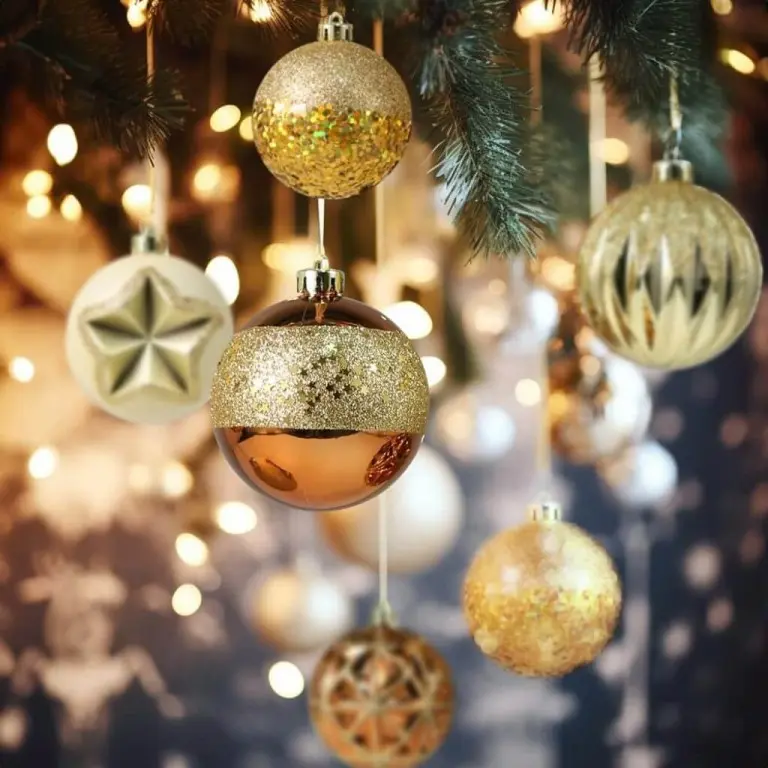
4. Pure White
White is the purest Christmas color. It makes us think of peaceful, snowy landscapes and the joy of a white Christmas. Think of snow-covered landscapes, the white fur trim on Santa’s suit, and the innocence associated with the birth of Jesus.
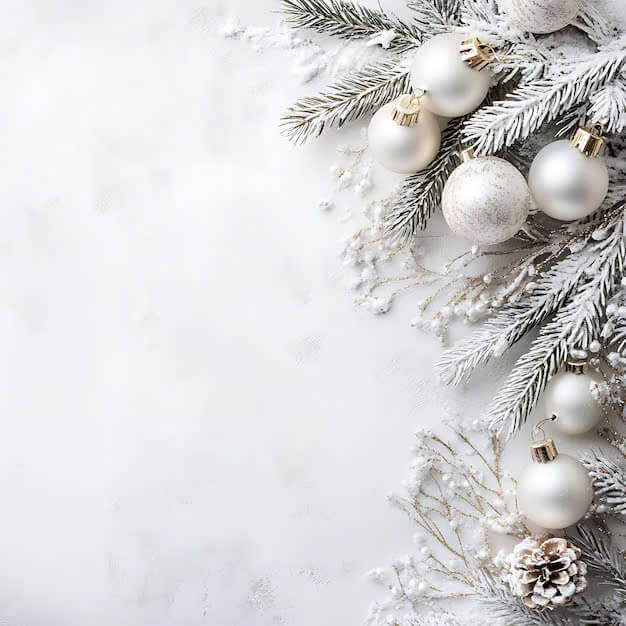
In many cultures, white is associated with angels and spiritual beings, adding a celestial touch to the Christmas celebrations. From snowy landscapes to white-frosted Christmas cookies, this serene color brings a sense of calm and serenity to the festive season.
5. Icy Blue
Often associated with the Virgin Mary, blue represents peace, tranquility, and the winter sky. It’s a cool and calming color that complements the warmer tones of the traditional palette. In medieval art, Mary was often depicted wearing blue robes, symbolizing her purity and grace. From icy blue ornaments that shimmer like frozen snowflakes to delicate blue decorations that evoke the serenity of winter nights, this cool hue brings a touch of tranquility to the Christmas celebrations.

6. Lunar Silver
Like gold, silver represents light and shimmer. It brings to mind the twinkling stars, the glow of moonlight on snow, and the sparkle of Christmas ornaments. Silver often adorns Christmas trees, ornaments, and table settings, adding a touch of glamor and sophistication. In some cultures, silver is associated with the moon, adding a mystical and ethereal dimension to the festive décor.
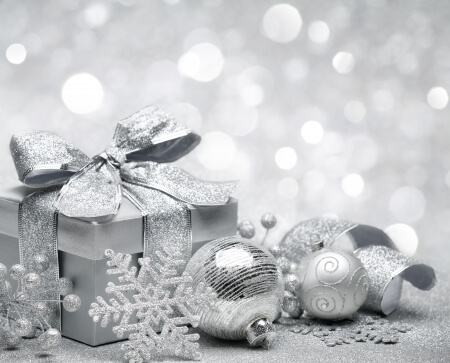
7. Royal Purple
Historically associated with royalty and nobility, purple is also the color of Advent, the period of preparation leading up to Christmas. It symbolizes anticipation, reflection, and the spiritual significance of the season.

Purple also represents penance and sacrifice, reminding us of the true meaning of Christmas. In many churches, purple vestments are worn during Advent, signifying a time of reflection and spiritual preparation.
Decoding Christmas Color Combinations
While individual Christmas colors hold their own significance, combining them creates a symphony of visual delight, each combination evoking a different mood and style.
1. Classic Christmas
The timeless trio of red, green, and gold reigns supreme, instantly conjuring images of traditional Christmas celebrations. This combination exudes warmth, nostalgia, and a sense of timeless elegance. Imagine a beautifully decorated Christmas tree adorned with red and gold ornaments, glistening under the soft glow of warm white lights, while a crackling fireplace fills the room with a cozy ambiance.

2. Winter Wonderland
Embrace the serene beauty of winter landscape with a palette of white, silver, and blue. This combination evokes images of snow-covered forests, glistening ice crystals, and the tranquil silence of a winter night. Imagine a white Christmas tree adorned with silver and blue ornaments, sparkling like a frosty masterpiece. Add a touch of icy blue lighting to complete the magical winter wonderland ambiance.
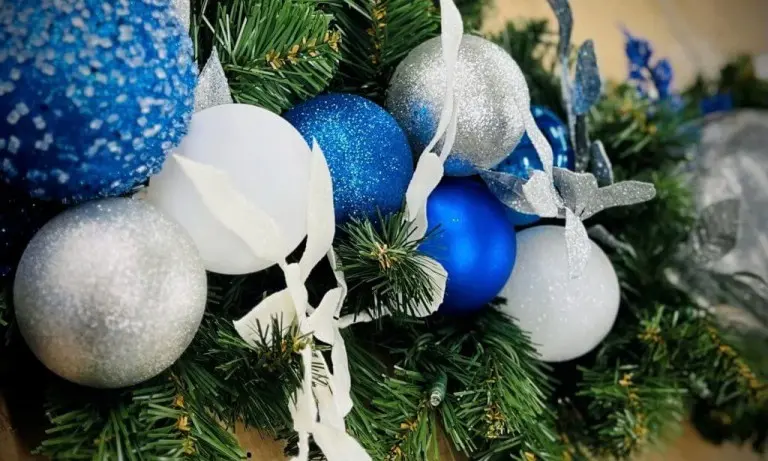
3. Modern Festive
For those who prefer a contemporary twist, the bold combination of red, white, and black creates a striking and sophisticated look. This palette is perfect for minimalist décor, adding a touch of drama and elegance to the festive season. Imagine a sleek, modern Christmas tree adorned with red and white ornaments, accented with black ribbons and minimalist decorations.
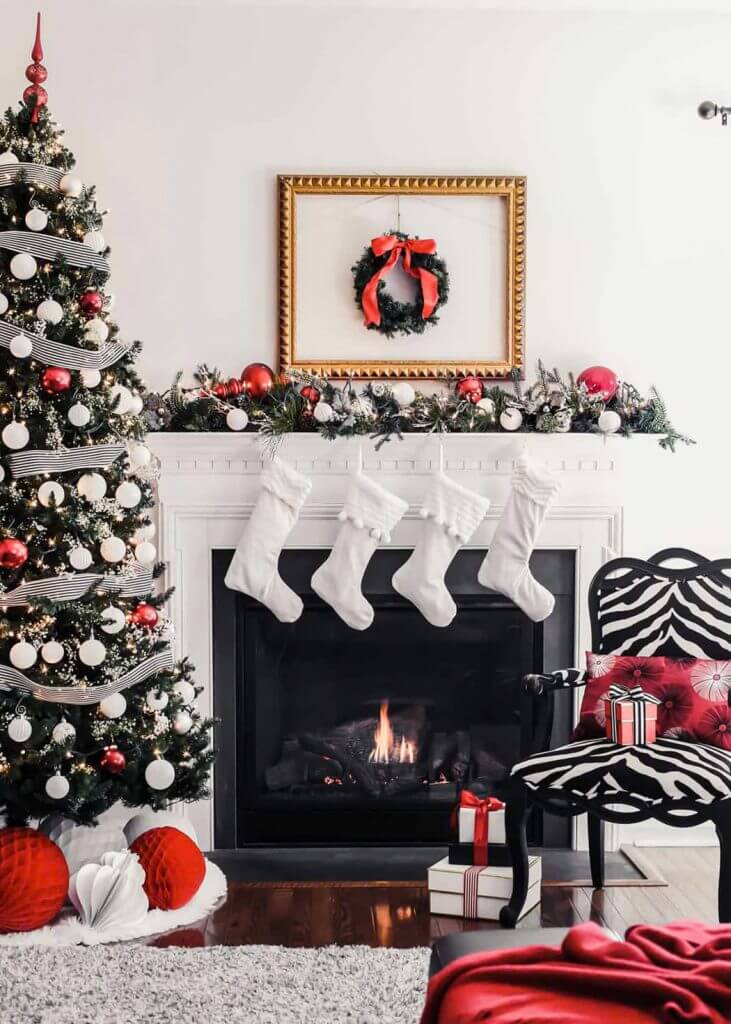
4. Rustic Charm
Embrace the cozy and inviting atmosphere of a rustic Christmas with a palette of red, green, and brown. This earthy palette is ideal for creating a rustic or farmhouse-inspired Christmas. Decorate a rustic Christmas tree adorned with farming elements like pinecones, berries, and burlap ribbons, complemented by red and green ornaments.
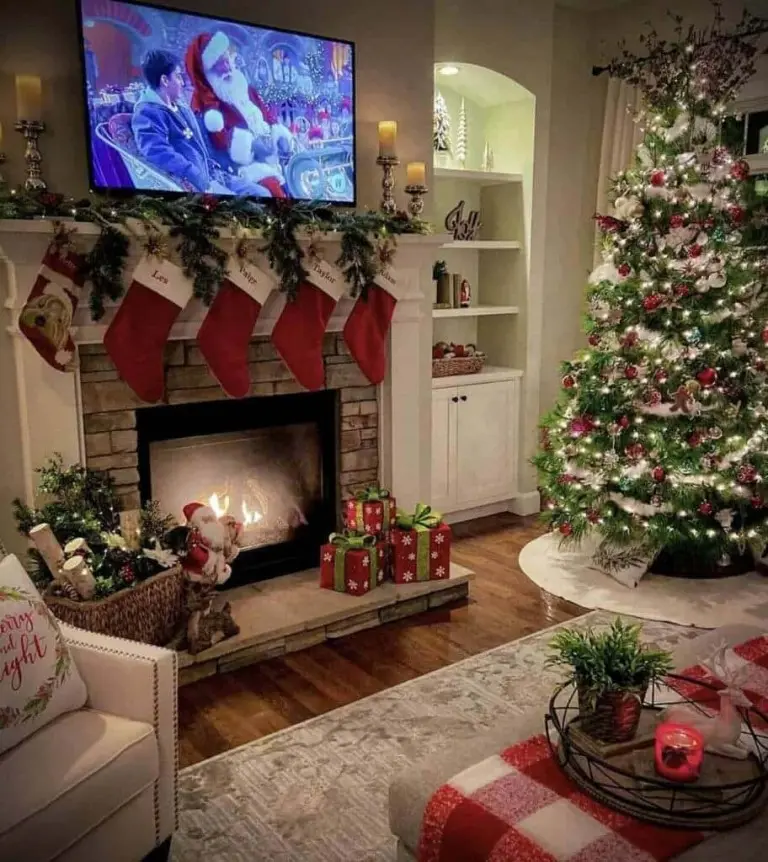
5. Victorian Elegance
Step back in time and embrace the opulence and grandeur of a Victorian Christmas with a palette of red, green, and gold, accented with burgundy and ivory. This rich and luxurious combination evokes images of grand ballrooms, ornate decorations, and a sense of timeless elegance.

Frequently Asked Questions
1. What are the traditional Christmas colors?
The traditional Christmas colors are red, green, gold, silver, and white. These colors have deep cultural and religious meanings, representing love, hope, prosperity, purity, and peace – all themes central to the Christmas story.
2. Why is red a popular Christmas color?
Red is associated with the spirit of giving, warmth, and love, which are core values of Christmas. It’s also linked to the red berries of holly, a plant often used in Christmas decorations. Additionally, red represents the blood of Christ in Christian traditions, adding deeper significance.
3. What are some popular Christmas color combinations?
Popular combinations include the classic red, green, and gold; the winter wonderland palette of white, silver, and blue; the modern and bold red, white, and black; the rustic charm of red, green, and brown; and the Victorian elegance of red, green, and gold accented with burgundy and ivory.
4. How can I use Christmas colors in my home decor?
Incorporate Christmas colors into every aspect of your home décor, from your Christmas tree and ornaments to garlands, wreaths, table settings, and lighting. Use colorful throws, pillows, and festive accents to create a warm and inviting atmosphere.
Bringing Christmas Colors to Life!
From the traditional red, green, and gold to the modern accents of blue and silver, Christmas colors play a vital role in creating the magical atmosphere we associate with the holiday season. Each color holds its own symbolism, contributing to the rich tapestry of Christmas traditions. So, embrace the vibrant hues of the season and let the Christmas spirit shine through!
Want to bring the magic of Christmas colors to life in a fun and educational way? Visit Worksheetzone for a variety of Christmas-themed worksheets that explore colors, patterns, and festive designs!







